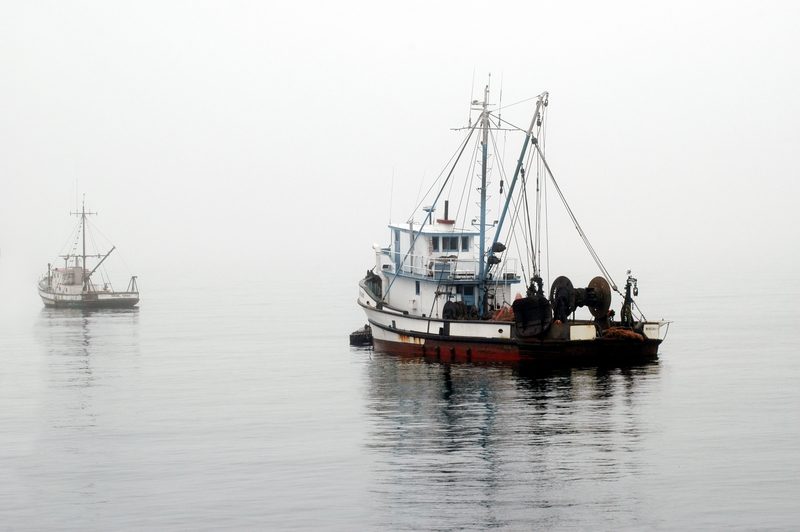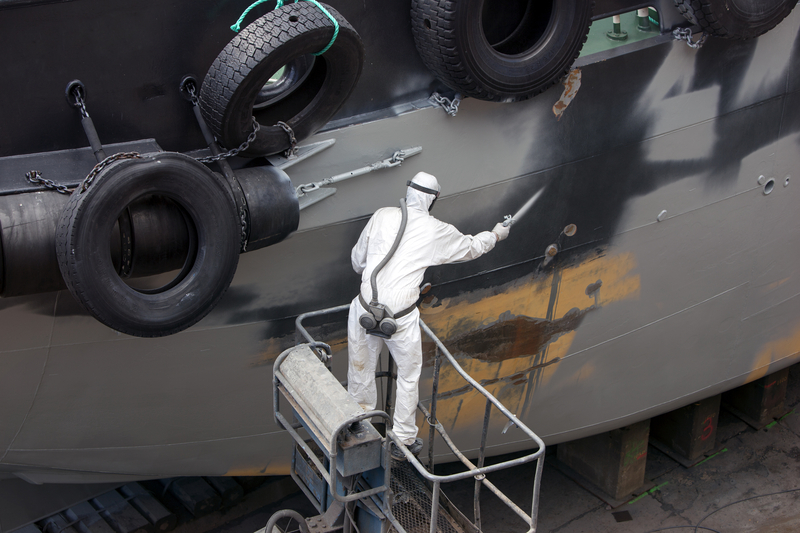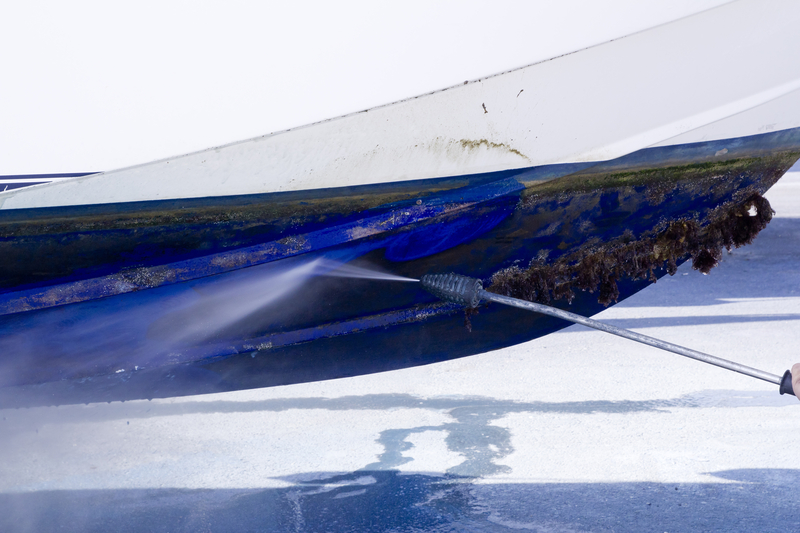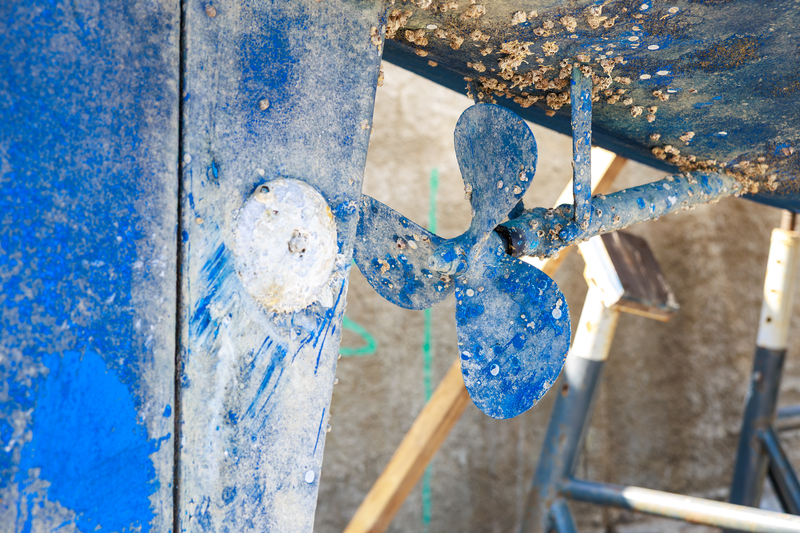Download our product information sheets: Rope Cutters | Flexible Engine Mounts | Damper Drive Plates | Flexible Shaft Couplings | Clamp Half Couplings, Adaptors & Bobbins
UK Office Opening Hours: Monday - Friday: 8:00am - 5:00pm | Saturday & Sunday: Closed
Published on November 4, 2025
Marine components face an unforgiving environment that destroys equipment faster than almost any other operating condition. Saltwater corrosion, relentless vibration, UV exposure, and thermal cycling work together to turn robust machinery into expensive scrap metal. Without proper marine maintenance practices, even premium components fail within years rather than decades.
The financial stakes are enormous. A failed cooling pump costs £500 to replace, but it can destroy a £50,000 engine if it fails at sea. Emergency repairs cost three times more than scheduled maintenance, while unplanned downtime can ruin business operations or holiday plans. More critically, component failures put lives at risk when they occur far from shore.
The difference between temporary fixes and long-term reliability lies in understanding what causes components to fail and taking systematic action before problems develop.
Saltwater doesn’t forgive neglect. Understanding how the sea accelerates wear and corrosion is the first step in protecting your vessel’s vital systems.

Saltwater is a powerful electrolyte. Its high chloride content attacks protective oxide layers on metals, making corrosion faster and more aggressive than in freshwater or air. Over time, unprotected steel, aluminium or bronze components pit, rust or weaken, particularly around joints, welds and fasteners. Routine rinsing and coating are critical parts of marine corrosion prevention.

When dissimilar metals, such as stainless steel bolts and aluminium housings, come into electrical contact in seawater, galvanic corrosion begins. The less noble metal sacrifices itself to the more noble one, creating visible pitting and rapid material loss.
Similarly, electrical currents from poorly grounded systems can accelerate metal wastage. Careful design and insulation are essential to prevent these hidden but damaging reactions.

Above the waterline, ultraviolet radiation degrades paints, sealants and composites. Constant temperature changes expand and contract materials, weakening joints and coatings. Vibration from engines and propellers stresses fittings and mountings, while suspended sand or debris erodes propeller edges and pipework. Over time, these small effects combine to shorten marine equipment lifespan.

Algae, barnacles and shell organisms attach to submerged surfaces, trapping moisture and corrosive salts against the metal. This biofouling not only adds drag, increasing fuel consumption, but also speeds up corrosion beneath the growth. Regular cleaning and antifouling treatments are vital for saltwater equipment care.
Selecting the right materials is the first line of defence. Marine-grade stainless steels, duplex alloys and anodised aluminium resist chloride attack far better than standard grades. Composite materials, properly bonded and sealed, also offer excellent durability. Investing in quality materials reduces the need for frequent replacements and supports long-term marine machinery longevity.
Good design can prevent galvanic corrosion before it starts. Isolating dissimilar metals with insulating washers or non-conductive coatings breaks the electrical path that allows galvanic current to flow. Designers should also avoid crevices where stagnant seawater can collect, as these areas become corrosion hotspots.
Marinisation means adapting industrial or automotive components so they can survive the marine environment. It involves sealing electrical systems, using corrosion-proof coatings, and upgrading dampeners, anti-vibration mounts and adaptors to marine-grade equivalents. Every improvement, from waterproof connectors to epoxy-coated housings, helps extend the working life of critical systems.
Effective marine component maintenance starts with prevention. Rather than waiting for failure, preventive maintenance focuses on regular checks, cleaning, lubrication and replacements based on schedule and condition.
Every vessel should have a structured inspection plan.
During any inspection, engineers should look for early signs of deterioration.
Pitting, coating blistering, rust streaks or loosened fasteners are early warnings of corrosion or vibration stress.
Uneven wear, oil leaks and abnormal readings in gauges or sensors can signal misalignment or blocked filters.
Engines demand disciplined care. Regular oil and filter changes remove contaminants that accelerate wear.
Fuel filtration ensures clean combustion, preventing injector and cylinder damage. Monitoring coolant levels and exhaust condition also helps detect underlying issues early.
Seawater cooling circuits are vulnerable to salt build-up and marine growth. Flushing these systems after each voyage removes debris and minimises scaling. Inspecting pump impellers for cracks or deformation ensures efficient flow and prevents overheating.
Moisture ingress can degrade insulation and corrode connectors. Regular checks of junction boxes, wiring insulation and cathodic protection circuits help maintain continuity and prevent stray current corrosion. Using marine-grade, sealed connectors adds an extra layer of protection.
Hydraulic lines, seals and hoses must be inspected for leaks, brittleness and wear. Misalignment in mechanical systems, such as shaft couplings. Without proper clamps, it can create vibration that accelerates bearing and seal failure. Routine realignment and lubrication ensure smoother operation and longer service intervals.
Small components often cause big problems when overlooked. Fasteners should be tightened to the correct torque and protected against corrosion with anti-seize compounds. Bearings require regular greasing with marine-grade lubricants. Worn seals and gaskets should be replaced immediately to prevent fluid loss and water ingress.
Corrosion is the most persistent enemy of marine maintenance practices. Controlling it effectively involves a combination of coatings, surface treatments and electrochemical protection.
High-performance epoxy primers bond strongly to prepared metal surfaces, while polyurethane topcoats offer UV resistance and flexibility. Zinc-rich primers add sacrificial protection, and protective films or wraps can shield vulnerable areas between service intervals.
Cathodic protection (CP) complements surface coatings by suppressing the electrochemical reactions that cause corrosion.
Routine cleaning, lubrication and protection are the simplest yet most powerful ways to extend marine equipment lifespan. These daily and post-operation actions prevent salt build-up, reduce wear and protect against the slow, cumulative effects of corrosion.
After each voyage, rinse all exposed areas and internal cooling circuits with freshwater to remove salt, sand and residues that cause corrosion. Clean early to prevent biofouling and use marine-safe detergents or salt neutralisers to protect coatings and the environment. Consistent rinsing keeps marine maintenance practices reliable and effective.
Lubrication prevents friction and corrosion. Use marine-grade oils and greases designed to resist saltwater and maintain viscosity in changing conditions. Apply penetrating oil to threads and grease moving parts regularly, following a set schedule based on hours of use. Routine lubrication supports smooth operation and longer marine machinery lifespan.
After cleaning and lubrication, apply corrosion inhibitors to metal surfaces and dielectric grease to electrical connections. Use covers or shields on idle components to prevent salt and UV exposure. Rotate and inspect stored spares regularly.
Even the best maintenance plan depends on the quality of the components it protects. Vibration, misalignment and poor isolation can shorten the life of engine mountings, couplings and shafts. When the right upgrades are in place, every maintenance action lasts longer, and every part downstream benefits.
R&D Marine provides engineered solutions designed to extend marine equipment lifespan and reduce maintenance frequency:
Correct component selection reduces stress, improves performance and significantly extends service life. Misalignment and vibration are two of the leading causes of early component failure. R&D Marine products address both at the source.
Speak with our marine specialist to specify the correct mount hardness, coupling type and installation hardware for your vessel and duty cycle.
Call +44 (0)1462 892391 or visit R&D Marine’s product pages to explore solutions and compliance guidance tailored to your vessel.
Service intervals depend on operating hours rather than calendar time. Engines need oil changes every 100-250 hours, fuel filters every 200-300 hours, and cooling system service annually. High-hour equipment requires more frequent attention with doubled inspection intervals beyond 5,000 operating hours.
Combine multiple protection methods for maximum effectiveness. Use sacrificial anodes replaced at 50% consumption, apply marine-grade coatings with proper surface preparation, and flush all systems with freshwater after saltwater use. No single method provides complete protection in marine environments.
Replace zinc anodes when they consume to 50% of their original size or annually, whichever occurs first. Check anode consumption monthly and verify electrical continuity to protected metals. Rapid consumption may indicate stray current problems requiring investigation and correction.
Maintain storage areas at 10-21°C with humidity below 50%. Use desiccants in sealed containers and keep parts in original packaging when possible. Rotate inventory using first-in-first-out principles and inspect stored parts quarterly for corrosion or deterioration.
Preventive maintenance costs approximately 25% of reactive repair costs whilst extending component life 2-3 times normal expectations. Well-maintained equipment retains higher resale value and reduces insurance premiums. The return on investment typically exceeds 300% over equipment lifetime through reduced failures and extended service life.